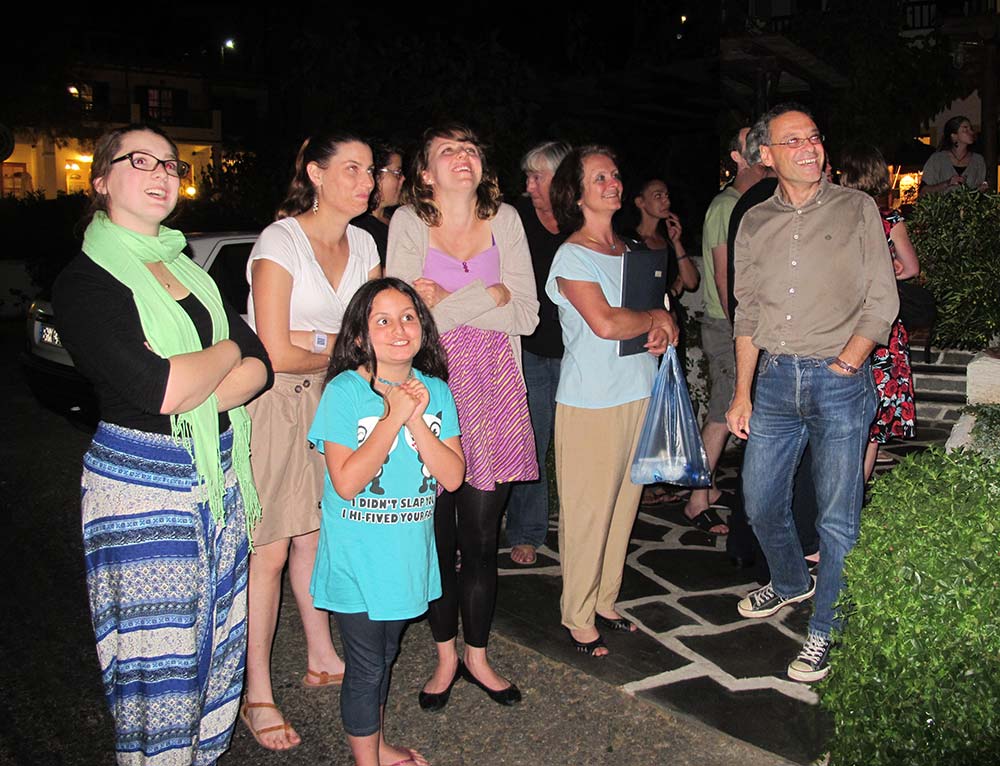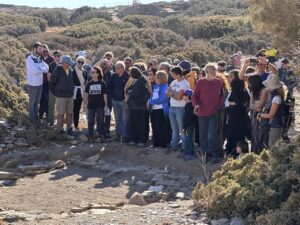by Irma Havlicek
Powerhouse Museum Online Producer

I mentioned this to our Zagora team members and Kantouni Cafe staff after dinner, and we all trooped outside the Cafe to take a look, the waters of the Aegean lapping quietly just metres away. I think most people were surprised and quite awed to know they were looking at Jupiter. There was a lovely connection about it all – Australian archaeologists and locals, Earth and sky, Australia and Greece.
Well, most of us are not there to take a look now – but for those who may be looking at our blog posts from there, Geoff has again let me know of an astronomical sight worth seeing from the Northern Hemisphere.
So here is Geoff’s suggestion for those of you checking this blog from the Northern Hemisphere, for a special visual treat on the morning of 27 December.
Visible from around 6.40am to around 7.32am when the Sun rises, you should be able to see, if the sky is clear, low in the south-east:
Saturn 26 degrees above the horizon
Venus 12 degrees above the horizon
Mercury 6 degrees above the horizon
The Moon probably won’t be visible at 3 degrees and just 2 percent as the New Moon is the next day but if the weather is cold and clear, just maybe!

If any of you in Andros or Greece or elsewhere in the Northern Hemisphere do get a chance to see this planetary alignment, we’d love to hear from you.
Astronomy was a hugely important part of the lives of ancient peoples. And this must have been the case for the people of Zagora.
Seeing patterns in the sky helped the ancients to navigate the seas; it also helped them to know about seasonal changes – when to sow their seeds, when to prepare for harsh weather, etc.
As more is discovered about the siting of building structures at Zagora, we may learn more about possible relationships to the sky – which may suggest how astronomy may have influenced life there.
Astronomical myths are often told in the Sydney Observatory monthly sky guides (which provide audio guides, transcripts and star maps). In fact the sky guide for December 2012 includes several references to Greek mythology, including the story of Scorpius the scorpion killing Orion the hunter (and the response of the goddess Artemis). The sky guide references other mythologies as well, including Indigenous Australian Dreamtime stories.

[Sydney Observatory and the Powerhouse Museum (which produces this Zagora Archaeological Project website) are both part of the Museum of Applied Arts and Sciences.]

